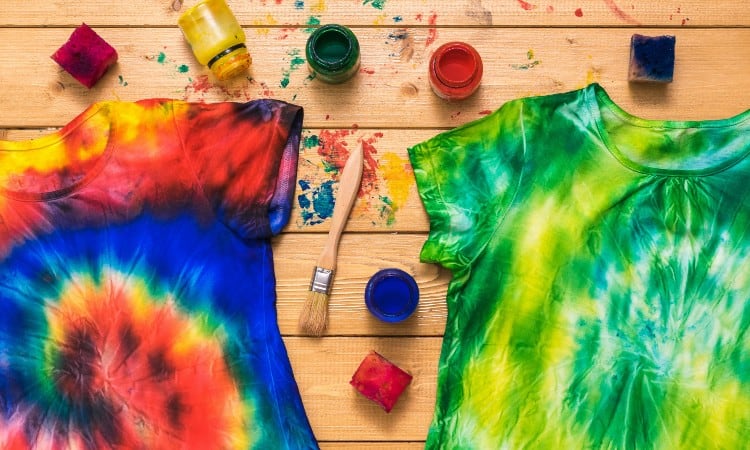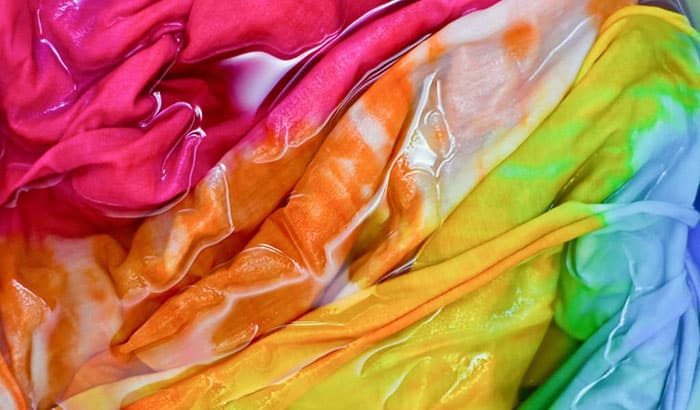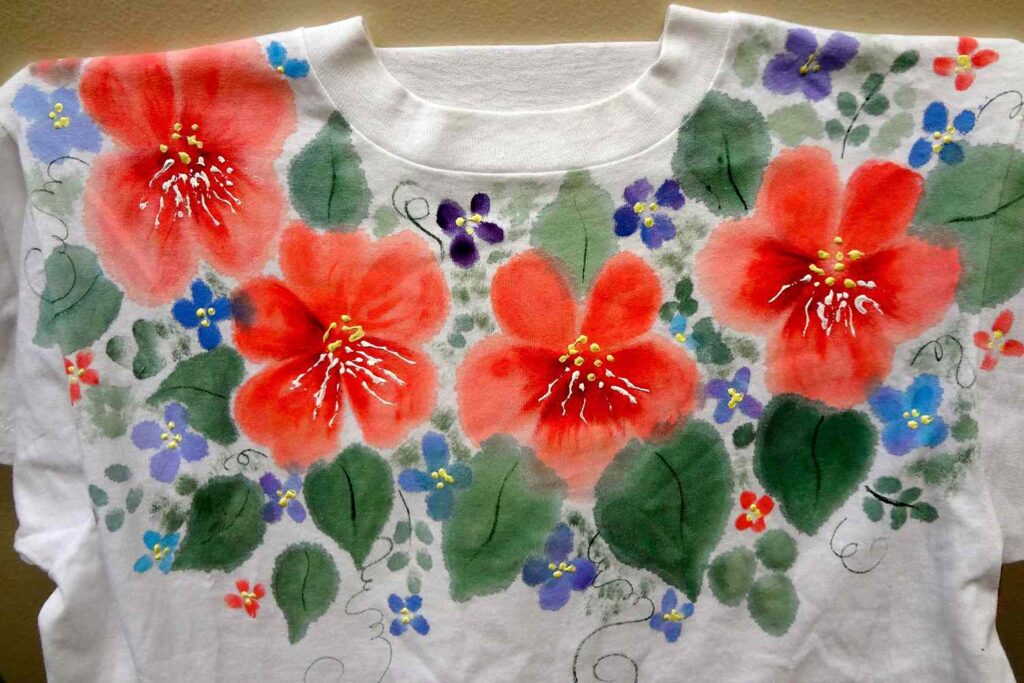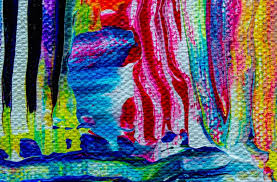
The best way to seal acrylic paint to fabric is with heat. The use of heat will ensure that the paint permanently adheres to the material. This will allow the garment to withstand the rigors of constant washing and wearing.

Iron is the easiest way to heat. You want to make sure the paint is completely dry before holding the iron close to the pattern.
The last thing you need is an iron on acrylic paint! As a general rule, wait at least 24 hours after coloring. This way you can be sure that the paint will stay on your clothes and not transfer to other surfaces.
You can also use a dryer on low heat. Whichever method you use, pay attention to the fabric composition of your garment.
Some materials react badly to too much heat.
Hot irons can cause burns. If you have any doubts about the heat resistance of your clothes, be sure to use a pressure cloth. Also be careful when using the heat from your dryer! They are known to melt certain fabrics, especially those containing synthetic fibers.
What is the best fabric paint?
Gotideal Acrylic Paint Kit The


Gotideal Acrylic Paint Kit contains 18 non-toxic colors ideal for wood, glass and fabric. Rich, fade-resistant hues will appeal to artists and crafters and add sparkle to any project. Ideal for indoor and outdoor use, the paint leaves a glossy, quick-drying finish.
Pros
Quick drying
Non-toxic, colorfast
Easy to mix
Bulk bottle
Cons

Requires adding fabric backing to paint for use on garments
Limited color options
Premium acrylic paint kit
This paint set comes with 6 brushes and is safe for children and adults.
A great starter kit for beginners, it contains 24 colors that can be mixed together to create more shades. Works on a variety of surfaces such as wood, plaster, clay and canvas.
Pros
Does not contain harmful chemicals
Bright and long lasting colors
Comes with an assortment of different brushes
Cons
Must use fabric medium for use on clothing
Comes in a tube not a Pa bottle
Art Fabeintricza
Available Arteza Permanent Fabric Dye is available in 60ml bottles and assorted colours, ideal for use on garments, bags and shoes. This paint is non-toxic and does not tend to crack and peel. Since it’s designed for fabric, you don’t need a fabric backing.
It can be used on a variety of materials including leather, denim, linen and canvas. With a quick-drying formula, the paint can be permanently ironed onto fabric.
Benefits
● 100% Satisfaction Guaranteed
● Quick drying
● Works on leather
Cons
Neon colors are more transparent than dark colors
Opaque jacquard finish may require more than one coat
Textile Color Fabric Paint


This special fabric paint can be applied directly from the bottle. It provides a vibrant color and slightly opaque finish and makes fabrics super soft.
works on both natural and synthetic materials, this paint is ideal for your DIY projects.
You can even use it on wood and paper.
Advantages
Can be used on leather
Can be applied with brush or pad
Super soft finish

Designed for fabric, no textile backing required
Disadvantages
Small 2.25 oz bottle may not be enough for larger projects
Does not cover deep tissue
● Difficult to find color swatches
●

What types of fabrics can be permanently dyed?
Dust Coating can be applied permanently to any material. However, the quality and longevity of painted areas may depend on the type of material you use.
Although designed to be used on any fabric, some fibers provide a better finish. The more natural fibers there are in the
fabric, the longer the paint is likely to last. Cotton, silk and wool are ideal for dyeing. Due to the water absorption properties of natural fibers, the dye penetrates the fabric, creating deep, rich colors from the surface of the garment to the inside.
Even better, the tighter the weave of the fabric, the better the paint will be absorbed.
Thicker cottons (like denim) or stiffer fabrics (like twill) are best for dyeing. Their construction allows more paint to be trapped closer to the surface of the garment before penetrating into the underlying surface.
Some synthetic fibers can also be dyed. Some polyester or nylon fabrics will cause the paint to stick to the surface. Unlike natural fibers, dyes are not absorbed by synthetic fibers.
It’s on the surface.


This means you need to consider the finish of the fabric before you start painting. If the nylon or polyester is treated with a special coating or water repellent, the paint may not adhere to the surface, causing the surface to flake or peel.
How to Care for Dyed Fabrics
To ensure your dyed clothes stay vibrant, hand wash in warm water and air dry. This will prevent the paint from being damaged by the powerful spin cycle of the washing machine.
Hand washing also keeps the water temperature cool. Note that when air drying your garment, keep it out of direct sunlight as the heat from the sun can damage the paint.
If you must machine wash your clothes, choose the delicate setting with a cool temperature and little or no spin. Again, air drying is best, but you can also tumble dry on low, as long as time is short.
Conclusion
Painting on fabric is simple and effective.
It’s a great way to create something unique or revamp a favorite shirt. Why not try it? Using the tips and tricks in this article, you can create your own stylish outfits in no time!
If you liked this article, let me know in the comments. Have you tried dyeing the fabric permanently?
How are you doing? What did you use and did it give you the desired effect?


Fabric Painting Designs Stylish Design Ideas You Can Try at Home
When you’re full of ideas to make your clothes look great, make a unique statement or just be more stylish. Useful.
It brings boring clothes to life. Clothing is your canvas and painting is art with skill. Fabric painting designs are about the patterns you design, the paints you use, your drawing techniques, and the materials you use. Instead of trying to paint on new fabric, you start with the fabric you already have. If you have a plain t-shirt or a plain kurta, decorate it with a picture to bring it to life.
Fabric painting is time consuming and requires careful attention to detail. Even if you want to do abstract fabric paintings, it’s best to start with blueprints. Knowing the position will help you align your patterns and designs better. You can start your fabric painting projects with acrylic paints. It is ideal for beginners and is easy to use while producing good results.
With your vivid imagination and creativity, you can use art to liven things up and bring clothes to life. Let’s discuss some great fabric painting ideas that provide great techniques for exciting happenings in the world of fashion design.
Contents
● Basics

● Clothing
● Painting
Basics
In fabric painting, several important factors must be considered. The choice of paint is one of them. Acrylic paint is a great option for beginners and others.
These colors are long lasting and rarely fade after washing. Acrylic paints are available in a variety of colors. Another is the type of fabric to be dyed. Each fabric has different properties, properties and weaving patterns. Fabric paint designs can only be done selectively.
● All fashion design courses address these fundamentals as part of the discussion of color techniques. When choosing a dye to dye your clothes, you need to identify 3 types of clothes.
● Fiber Reactive Dyes work well on cellulosic fibers including cotton, linen and hemp. Soaking clothes in baking soda before washing can stabilize colors and stains.
● Protein fabrics such as wool, silk and alpaca should use acid dyes for protein fibers.
● For synthetic fibers ie. Rayon, polyester, nylon and acrylic, everyday dyes can be used with a dye wash.

Cotton garments are the best choice for beginners in textile dyeing who want to achieve satisfactory results. Any other type of clothing will require more care and experience to help paint. Acrylic paints work well on cotton fabrics.
This will allow for more intricate designs and better color combinations. For best results, dyed fabrics should be clean and wrinkle free. Keep the fabric damp before painting so that the color flows smoothly during application. It must not be soggy or it will absorb all the paint. If the fabric is too wet, the acrylic paint will smear, resulting in an unsatisfactory final look.
Painting
Painting on fabric is done by hand or by stamping. You sketch the design, trace it or reproduce it on the fabric with fabric paint pens, fabric paint tubes or paint dots. Before finalizing your design, you can make changes to avoid any changes after you start working on the fabric. It is easier to retouch on paper than to paint on fabric.

Choose the paint that best suits the garment.
In general, acrylic paints are suitable for different types of materials. The painting methods used can vary from simple watercolor, oil and charcoal stripes. The techniques used in fabric painting vary depending on the design of your pattern and its overall look. Embroidery designs are also available for fabric painting.
The painting itself is delicate work.
During the stamping process, the pattern cut from the solid base is dipped in color and printed onto the garment. A design cut from a strong base fabric is placed on the garment and brushed or brushed onto the board, allowing the design to be applied to the fabric. After painting, let the paint dry. Ironing the back dyed fabric will permanently set the color of the fabric. The
Apparel Design course offers many exercises to help you master designing on fabric.
Look for fashion design schools where the art of fabric dyeing is taught in detail. With more practice, you can get better at fabric painting. Once you have mastered this, you can experiment with different painting techniques to further improve your fabric painting skills. The
fabric painting ideas we have shared here are just to get you started. It pays to take formal craftsmanship training so the
can produce impactful designs that define the style for you.
W


Beautiful Sharee Painting Idea
From resist paint to hand paint, there are many ways to give a colorful impression on a saree other than just using paint brushes. The Indian tradition of saree painting can be traced back to traditional painting styles using reverse painting, stamping, pen painting and brush painting. From the pictorial representations that can be found on the walls of temples to the walls of caves, paintings on various materials have been reproduced through the ages and most of them seem to be continuations of traditional arts like Phad paintings, Kalighat, Madhubani, Kalamkari, Orissa Patta Chitra and Warli Art style art.
Wearing a hand painted saree is like adding a new dimension to your personality, like a beautiful weave, except the art is created with a brush or a pen. Of course, religion had an overwhelming influence on these paintings.
However, it has changed since its more commercial use. However, finding a good hand-dyed saree also means knowing what your wardrobe really needs. While some may prefer the rich, jewel-toned look of Rajasthani Phad paintings, others may prefer the more vivid figures and natural-colored patterns of Kalamkari. Probably few will appreciate the beautiful intricacies that come with Madhubani designs, many will appreciate the abundance of abstract designs and floral patterns that have slowly found their way into saree fashion trends.
But there is no doubt that hand dyed sarees as a fashion trend are here to stay.
So what’s the best thing you can find in design? For that, you just need to browse the collection, which is mainly divided into three categories – floral, abstract and traditional designs. Each matches a variety of looks and personalities. Floral patterns look best on the lighter shades of sarees and even better on white. The material in the picture below can be plain white cotton, spun silk or silk.
The effect of the painting will of course be affected by the choice of material. Although it is safe to say that cotton and silk are the softest on the skin, hand dyed sarees have the best color resolution than those containing lightly synthetic blends. The reason for this is that cotton generally allows colors to run or fade.
Green Glory
A perfect example of how a single pattern can be created to add so much excitement to an ordinary saree in terms of design is evident in this beautiful crepe.
Sublime Flowers
A similar floral pattern, but this is the style that draws the most pattern on the front of the saree – ie the part that covers the front down to the shoulders.
Note the flowers running along the bottom of the pleats and the pallu with a bit of light pink to accentuate the floral design even more.
Vibrant Dual Toned Saree
Vibrant Dual Toned Saree of purple and fuchsia pairs well with pink and black making it a beautiful color match. Note that the flowers are not always delicate when interpreted and can be done in bold patterns along the pallu like in this saree.
Alternating Pattern
Take any large, linear patterned cotton saree, play with flowers on part of it and voila – simple patterns within patterns!
Easy Breezy

Well, when it comes to flowers, there is no hard and fast rule to match them too precisely with real flowers, because there is a lot of artistic freedom.
Whether it is the shape of the leaves, the petals or their color. Here are two brightly colored sarees with large floral prints, but the way the simple flowers are drawn makes them even more stunning. Note the use of bright colors for the background, rather than the typical light colors.
The Contemporary Twist
‘s modern take on fabric painting introduces a wonderful blend of rustic ethnic themes with nature-based designs as well as eclectic human figures or spiritual themes. Paintings of Buddha and Krishna on pale paper are all the rage.
Lotus Pond
Here is another look at how pallu is transformed into more traditional wall designs, usually done on Kerala cotton sarees. This pattern is even more magnificent when the white lotus emerges from the pond covered with green leaves.
Pink flowers
Here one of the most feminine colors is used to adorn the yoke part of the saree with great effect, while the rest remains white with very small polka dots. The same petals, laid on rich silk flowers, look completely different. The fabric really plays a big role in the end result of a hand dyed saree.
Ganesha and Shankha
pattern murals look incredibly rich, despite being painted on cotton and sometimes silk. The rich definition and details of the figure here, especially the decoration and features, are the most classic part of the appearance.
Kalamkari Jewelry


Anyone who understands the intricacies of textile art will appreciate the time and skill required to create Kalamkari designs using vegetable dyes. This is a beautiful hand dyed Kalamkari silk saree that brings out the beauty of natural colors.
Warli Saree
The art of everyday life has been revealed through this folk art in the simplest stick figure design, loved by all who have seen it, what could be better than giving your saree a whole new ethnic feel Good way to do it with Warli Tribal Art!
Two states
Well, not exactly the states of the Chetan Bhagat book, because here are two from neighboring Bihar, you can see examples of them in ivory white silk Madhubani sarees, and another from West Bengal, a black style saree Kalighat. While the Madhubani saree depicts scenes from the Ramayana, in the Kalighat paintings one can see Bengali folk tales and Krishna stories.
An Imagery of Abstract Designs
Perhaps the designs that catch your imagination the most are the most artistic and innovative – captivating designs, even when the abstractions seem to fit together in a cohesive pattern. Here are three sarees, each in a different color scheme – some are more intricate, but none can be called boring.

Easy Yarn Crafts: Creative Ways to Use Yarn Without Knitting or Crocheting
Are you avoiding the yarn section of your craft store because you don’t crochet or knit?
Think of all those beautiful colors and soft, fluffy textures you were missing! You can do a lot of crafts with yarn, and you don’t need to know how to work a knitting needle or a hook to make something really beautiful. Invite a friend over and have a fun craft party for adults!
Wrap Your Yarn:
If it can be wrapped, it can be completely rewound in any color and/or texture your heart desires. Some popular ideas include wrapping garland shapes with yarn in a single shade or in different shades and textures.
Styrofoam balls can be made into decorations by wrapping yarn around them, gluing them as you go, and displaying them in glass bowls or large vases. Another option is to use balls of yarn to make garlands!
You can also create beautiful monograms by wrapping large letters from craft stores or adding a little flair to recycled bottles, glass vases and hurricanes. Try wrapping the hurricane with just a few strands instead of covering the entire surface. This creates a beautiful glow, allowing light to shine through the glass between the strands.
Using recycled bottles and jars, simply cover the center and turn them into beautiful home decorations in minutes.
And of course the centuries-old art of raising the Eyes of God!
Useful Yarn Craft Tools:
● Yarn
● Googly Eyes
● CRAFT FOAM
● SCISSORS
● CRAFT GLUE
● WOODEN CRAFT Sticks


444 4 4
Sleeve display? No picture required, simply wrap a single color of yarn around the entire surface of the frame for a crisp, clean ornament. If you like bright colors, twist them with multicolored yarn or your favorite yarn.
Shades are the perfect wrapping canvas; whether the yarn is solid or in multiple shades, the results are stunning. Create an ombre pattern by twisting from the bottom of the shade as you glue. With a particular color theme in mind, start with the darkest shade and work your way up the shade, changing the yarn color about five times until you’re done. For example, a warm ombre design might start with red, move to dark pink, solid pink, light pink, and finally white.
Another option is to decorate your table with a napkin ring wrapped in tulle.
Picking colors that match the season is a quick way to make a big change with next to nothing. Try wrapping the sides of plain storage boxes or baskets to add color and dimension. It’s perfect for displaying items, catching daily mail, or filling the bathroom with towels or soap. When the holidays roll around, spin the foam cones to make holiday trees. There are a variety of different yarn textures to customize your trees.
Try three cones, one wrapped in basic yarn, another wrapped in colorful curly yarn, and a third wrapped in plush yarn for a lovely display.
And the jewelry? We’re not talking about children’s wire necklaces; there are all kinds of ways to accessorize your wardrobe. Wrap the yarn around the bracelets for a soft and comfortable look, or use thinner bracelets for a more refined look. Consider adding beads or buttons to your yarn as another way to dress up tired old jewelry.

Yarn can also make beautiful ornaments. With the help of a fabric riser and balloons, you can create beautiful ball ornaments that can be displayed in a variety of ways. After dipping the yarn in the stiffener, wrap it several times around the balloon, overlapping it as you go, but don’t completely cover the balloon. When it’s dry, press the ball down and you’ll end up with a nice accent that keeps the ball in shape.
Yarn Crafts: Make Your Own Pompoms
Pompoms are a fun way to decorate a variety of items and are easy to make.
There are many tutorials that will show you how to do it step by step. There are different ways to make pom poms.
You can see how to make these beautiful pom pom chicks here! These adorable chicks are easy to make and don’t require any special tools. Just your fingers, yarn, eyes, and craft foam.
Click to see the video tutorial!

Just grab a fork and a pair of scissors from your kitchen drawer to make little pom poms. To make larger or different sized pom poms, you can create a quick template by cutting circles out of cardboard. Pom poms are great gifts that are great to add to regular dollar store knit hats,
pom poms are great gifts that are great to add to regular dollar store knit hats and turned into a phone would be a cute addition to the nursery. You can stack them in bowls or vases for a quick decoration, or string them in different lengths and hang them from the ceiling in a child’s room or above a birthday party table.
They can also be
. Simply glue them to the ends of the pins or turn them into decorative flowers. Presented in a vase, it will add an inexpensive touch to any room. There are seven different ways to make pom poms on Red Ted Art.
Some Holiday Yarn Crafts:
● Wrap yarn around popsicle sticks to create this beautiful glittery Star of David.
● Sample map of Saint-Pierre
Make a furry cardboard monster out of wool for St. Patrick’s Day!
● You can also use the yarn to make mustaches and make a cardboard gnome tube for Christmas, a great craft for kids!
Need more ideas? Head over to Fun Family Crafts for over 260 yarn crafts for kids! Now that you’ve learned the many ways to create simple yarn creations, there’s no need to dodge the yarn aisle anymore.
In fact, with all these great ideas, you probably won’t want to leave!